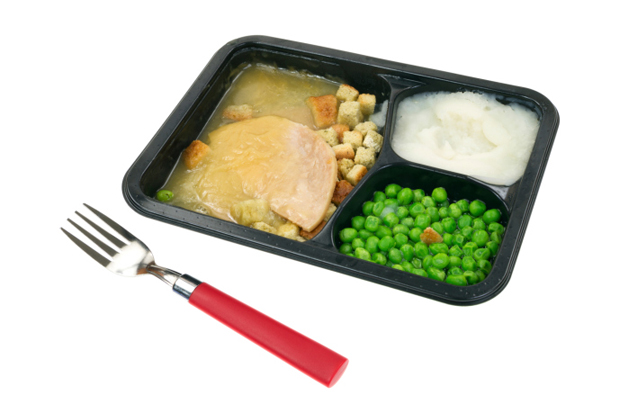When some years ago I stopped having to go to an office, mainly because nobody wanted me to go to one, I started to do quite a lot of cooking. I am no natural cook, but I had ambitions. I bought more and more cookery books — Jane Grigson, Elizabeth David, Nigella Lawson, Jamie Oliver, that kind of thing — far more than I was ever going to consult. And as it turned out, I found myself relying mainly on just two books — Marcella Hazan’s Essentials of Classic Italian Cooking for Italian dishes, which are generally satisfying and quite simple to make, and, for similar reasons, on Delia Smith’s Complete Cookery Course for traditional English roasts and puddings (though for bread-and-butter pudding I liked to refer to the late Duchess of Devonshire’s Chatsworth Cookery Book, where it is puzzlingly found in the index not under ‘B’ but under ‘D’, for ‘Duke’s Bread and Butter Pudding’). Even for the simple dishes that I cooked repeatedly I never dared make one without looking up the recipe again, so feeble of memory and lacking in confidence was I. But I quite enjoyed cooking all the same. It was intellectually undemanding and less exhausting than gardening, and yet it required sufficient concentration to make me forget my worries for a while.
But now things have changed. I have, to my surprise, a job (at the Oldie magazine), and so have to spend a lot of time in London, commuting up and down from my home in Northamptonshire; and at my age (74) I don’t feel like spending hours at the stove any more. So unless I have guests at the weekend, I rely to a shameful extent on microwave meals, purchased, as often as not, at the Marks & Spencer food store at Milton Keynes station. This goes against the grain, for I have always been wary of microwave ovens, having no idea how they work. There is something spooky about the way they make food so hot, and so quickly, without damaging its container. I fear they must be radioactive or something. I assume they are not dangerous, as the British eat 1.6 billion ready meals a year without any apparent damage to their health, but my doubts remain.
Another aspect of microwave meals that worries me is the frighteningly long list of mysterious ingredients they contain. The other day I bought what must be the fastest and simplest ready meal in the world, a hamburger in its bun that took 100 seconds to cook in a microwave oven. It consisted of just the burger, the bun, a plastic sachet of sauce, and a wafer-thin slice of processed cheese. Yet between them they contained nearly 70 different ingredients. Even the tiny slice of cheese could boast 16 ingredients, which included such items as sodium polyphosphate, calcium phosphate and beta carotene. What have they got to do with cheese?
I should point out that I needed a magnifying glass to read these words, as I did to read the instructions about how to cook the wretched thing (which, to be fair to it, tasted surprisingly similar to a normal, rather nasty, cheap hamburger). All ready meals have this in common: that the print on the packaging is almost illegibly small. This may be because of the enormous number of ingredients that have to be listed on them, but it is hard on the old with failing eyesight, who must be among the biggest consumers of ready meals. They are much easier to cook than even meals-on-wheels, which usually arrive frozen, and it’s verging on cruelty on the part of their manufacturers that the instructions on them are so difficult to read. And as if this were not aggravation enough, they routinely include the warning that not all microwave ovens are the same and that therefore reference should be made to the oven’s original brochure before cooking anything in one. Who, one wonders, especially among old people, keeps his microwave oven brochure handy?
That said, microwave meals can be perfectly edible, even tasty, particularly when they are Indian, Chinese, or otherwise oriental. In fact, they are almost indispensable if Asian food is what you like, for it is almost unthinkably boring and complicated to cook such dishes from scratch at home. But there’s something a bit sad about them all the same, a fall-back solution for the old, lazy or apathetic. I think I may just have talked myself back into doing a bit more cooking again.
Got something to add? Join the discussion and comment below.
Get 10 issues for just $10
Subscribe to The Spectator Australia today for the next 10 magazine issues, plus full online access, for just $10.
You might disagree with half of it, but you’ll enjoy reading all of it. Try your first month for free, then just $2 a week for the remainder of your first year.













Comments
Don't miss out
Join the conversation with other Spectator Australia readers. Subscribe to leave a comment.
SUBSCRIBEAlready a subscriber? Log in